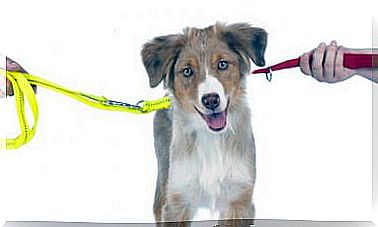Diabetes In Dogs: Proper Treatment

Those who have not gone through it may not know that one of the diseases that can affect our dog is diabetes. Well, indeed, this very human disease also occurs in dogs.
In today’s article we will talk about this condition and also about the most indicated treatment for diabetes in dogs.
What is diabetes in dogs
The dog’s body makes a hormone in the pancreas called insulin. Its purpose is that, in its journey through the bloodstream, it can transform the food that has been ingested into nutrients that provide the body with energy.
When diabetes occurs in dogs, the animal does not produce all the insulin that this process requires, or even the one that it generates does not have a valid function.
When carbohydrates have been converted into glucose and it cannot be metabolized by the body due to not having the necessary insulin, it accumulates, putting your health at risk.
In addition, the animal will not have enough strength to face its day to day. For this reason our dog will want to eat more food, aggravating the problem.
Percentage of diabetes in dogs

Although the figures are not precisely known, it is estimated that 1 in 500 dogs suffer from this disease, a proportion that increases since the animal reaches 4 years of age.
Age is not the only risk factor for this disease. Diabetes in dogs occurs most often when the dog is overweight. There are also certain breeds in which it is more prevalent, such as the Samoyed, the Poodle, the Chow Chow or the Doberman, among others.
Diabetes in dogs: its symptoms
When the dog begins to accumulate glucose in the blood, it will show the first signs of diabetes :
- An increased appetite or the opposite.
- Weight loss even if you eat more than usual.
- An excess of thirst.
- You urinate excessively even after increasing the amount of fluid consumed.
- A state of general apathy due to lack of energy.
Treatment of diabetes in dogs
As in any other disease, the treatment of diabetes in dogs must be personalized in each case. For example, an animal that has been diagnosed with the disease and continues to eat in the usual way and does not vomit will be treated with insulin injections.
It will be done in the way your doctor has indicated and always using veterinary insulin.
In more serious cases, it may be necessary to stay in a veterinary clinic for intensive treatment of the disease.
You will generally receive two injections daily and will be monitored to monitor your vital functions. In these cases it is possible that the veterinarian decides that the best insulin to be administered is the same one used with people. The admission will last the time necessary to stabilize our pet.
In any case, the objective of the diabetic dog is to prevent its glucose levels from being too low, while in the case of humans it is important to stabilize them.
High levels in the animal have a lower impact on its health, since its life is shorter than that of people. In fact, when they are slightly high, the symptoms of the disease usually disappear.
Likewise, it will be tried that, as far as possible, its owner keeps a record of the amount of food and drink that he eats, in addition to controlling blood glucose levels.
Diet and exercise to treat diabetes in dogs

The vet will show us what guidelines we should follow when feeding the animal. Your diet should be varied and attractive. Let’s not forget that sometimes the animal can present as a symptom a lack of appetite, a problem that we will have to deal with with perseverance and patience.
When the opposite happens, that the animal is hungrier than normal, you have to try (and achieve) that it does not eat anything outside of the established diet.
Exercise is an essential part of treating diabetes in dogs. You must ensure that the animal leads an active life by taking it for a daily walk. Don’t let his lethargy allow you to lead a sedentary life.
Always put into practice all the orders that your veterinarian has given you and you will see how diabetes in dogs does not prevent you from enjoying yourself with your pet.
Images courtesy of perlaroques and Valerie.









